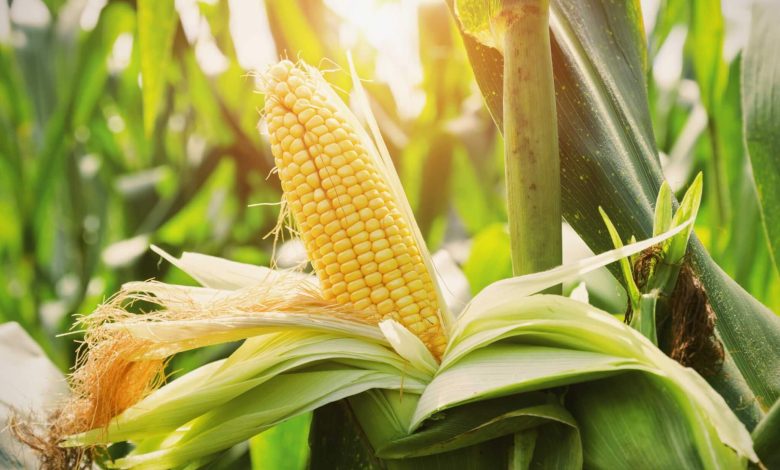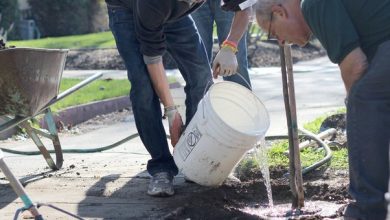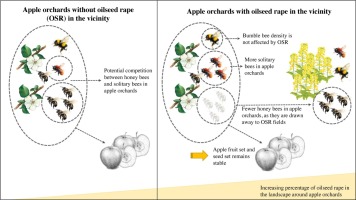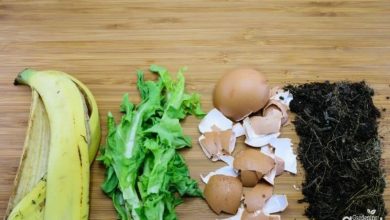Learn to Plant Corn: [12 Steps] and Much More

Estimated time to read the article:8 minutes.
Estimated harvest time:80 days.
Water, earth, sun and patience.
That iswhat you need to plant corn. How about?
Keep reading
Plant Corn Step by Step:
- When? Direct sowing is done from April to June.

- Where? Areas with a lot of sun, outdoors. Weed cleared.
- Harvest time? It depends on the variety, but between 63-80 days.
- How do we prepare the land? Very bad compost. Does not toleratefresh manure well.
- How do we water? Ideal drip. We will avoid sprinkler at all costs.
- How often do we water? Abundant. About 2.5cm of water per week.
- How do we sow? Temperature of 15-20ºC. About 2-3cm deep. At a distance between plants of about 35cm.
- How do we harvest? Prick a pimple and it should release a milky liquid.
- Good associations? Pumpkins, courgettes, lentils, cucumbers, melons, peas, tomatoes and watermelon.
- Bad associations? Beetroot, celery or potato. Neither do plants like oxalis triangularis.
- Plagues and diseases? Birds and rodents. Thrips, aphids and bedbugs.
 The organic family garden (CROPS)
The organic family garden (CROPS)
- Well, Mariano (Author)
€9.49 View on Amazon Prices with VAT without transport
Last updated on 2022-07-31 / Affiliate Links / Affiliate API Images
Corn, along with wheat and rice, is one of the world ‘s most important agricultural cereals and belongs to the genus of fruit vegetables.
In addition to supplying nutrients to humans and animals, it is a raw material with which starch, oil, alcoholic beverages and even fuel are produced.
Although its origin is the subject of several discussions, the Mesoamerican peoples have countless legends that explain their history and the importance of this food for the development of their culture.
Not in vain is it considered the element from which man was formed, according to the cosmogony of some ancient peoples of the continent.
Planting corn can improve your physical health and nurture your mental well-being. Start growing your own corn and enjoy the multiple benefits it will bring to your body.
Did you know…Cintéotl is the Mexican god of corn and is a deity who, like the plant he represents, has a dual gender.
main features
Maize, Zea mays, is one of the most important plants in the plant kingdom.
It has been cultivated for more than 4,000 years and forms the basis of the American diet.
It is an annual grass plant with great vegetative development, a knobby and solid stem, which contains fifteen to thirty elongated leaves.
It is a monoecious plant, that is, each plant has male and female flowers. Its leaves acquire an elongated shape that grow very close to the stem, from which the spikes or cobs are born.
Did you know…In the state of Oaxaca, Mexico alone, 35 different races of maize have been recorded.
No products found.
Each cob consists of a trunk (cob) covered by rows of yellow grains, which constitute the edible part of the plant. Each grain is considered as an independent fruit.
 There are numerous species of corn, but, unless we have chickens or a grain mill to make grits, sweet corn is the one that is usually grown in home gardens.
There are numerous species of corn, but, unless we have chickens or a grain mill to make grits, sweet corn is the one that is usually grown in home gardens.
Sweet or tender corn is characterized by having a golden grain with a mild and sweet flavor. On seed packets it can be found under the name «SU».
More than 50% of the sugar contained in this corn converts to starch within 24 hours of being picked, so it should be consumed or canned as soon as it is harvested.
You can also find sugar-enhanced sweet corn labeled «SE» on seed packages.
It is a type of corn genetically modified to reduce the starch sugar, which increases its sweetness and the softness of the grains.
Generally speaking, maize is adapted to a wide variety of soils where it can produce good crops if the right conditions are present.
Necessary conditions for growing corn
To plant corn effectively, the following factors must be taken into account:
Irrigation
The corn requires a lot of waterso we will monitor its correct hydration, especially from the formation of spikes.
CULIVERS Organic Worm Humus. Plant food. 100% Natural Organic Fertilizer. Soil Restorative (Tomatoes and Vegetables, 20 Kg)
- Worm humus of the highest quality 100% organic.
- Organic matter rich in microorganisms. (1 gram of humus contains about 2 billion microorganisms) The…
- Stimulator of the root development of plants and their absorption of nutrients. It has a neutral pH that makes it ideal for…
- Ecoforce worm humus increases the quality and production of crops. It has a low C/N ratio, allowing…
€19.90 View on Amazon Prices with VAT without transport
Last updated on 2022-07-31 / Affiliate Links / Affiliate API Images
Tips on watering
 Prior to planting corn, intensive irrigation is carried out to have moist soil and promote germination.
Prior to planting corn, intensive irrigation is carried out to have moist soil and promote germination.
Although the soil should remain as dry as possible, the plants should be watered at least once a week.
We recommend drip irrigation due to its efficiency in terms of consumption and the ability to keep the soil moist.
Corn needs about 2.5 cms. of water per week. The lack of water means that the cobs do not grow all their grains.
It is recommended to install an irrigation system for the ground, because if they are watered from above, there is a high probability of eliminating the pollen from the plant.
Keep in mind that corn is pollinated through the wind.
Irrigation should be increased when flowering begins to have more abundant ears. When the spike is well formed and the grains hardened, we can stop watering and let the plants dry out.
When watering them, you should be careful not to get the stems wet as this can attract pests.
Did you know…Popcorn or popcorn was a typical dish of the native Amerindians and was such a novelty for the first explorers of the New World, that Columbus and his men bought necklaces made of popcorn from the Caribbean natives.
nutrients
Corn is a very demanding plant in terms of nutrients, so it is necessary to have a well-fertilized soil rich in humus.
Nutrient Recommendations
A good background fertilization with well decomposed compost is recommended.
Keep in mind that corn does not tolerate organic matter such as fresh manure well.
 The land to plant corn, in addition to being well fertilized, must remain dry. Before planting, compost the soil for about 4 weeks. This will give it time to blend well with the ground.
The land to plant corn, in addition to being well fertilized, must remain dry. Before planting, compost the soil for about 4 weeks. This will give it time to blend well with the ground.
Corn prefers soil that is rich in nitrogen and well-fertilized. If possible, plant it in a plot where you just planted peas.
Sometimes it is advisable to fertilize when the first shoots appear, but try not to do it in excess as it could bring pests.
the substrate
Corn requires fairly loose soil to facilitate plant rooting and moisture retention. In addition, the soil must be deep and aerated, rich in humus and nutrients.
It is recommended that it be slightly acidic. The pH range of 7.0 to 8.5 is considered optimal.
Substrate Tips
 Generally speaking, the maize plant is adapted to a wide variety of soils.
Generally speaking, the maize plant is adapted to a wide variety of soils.
However, intermediate type soils are recommended, with good drainage, loose, aerated and preferably flat.
Clay soils are not very advisable,since they present a high retention of humidity, which in turn decreases the correct ventilation of the soil, which is an essential factor for the development of the plant.
Maize grows well in deep, fertile soils with a high organic matter content and good drainage. A soil in these conditions helps control pests and diseases, and thus favors germination.
Blumfeldt Timberflor Plant Pot, Plant Pot, Easy to Place, No Drainage Hole, Fiberglass, Sturdy, for Indoors and Outdoors, Wood Look, 60 x 50 x 30 cm, Brown
- FOR INDOOR AND OUTDOOR: In the Blumfeldt Timberflor pot shrubs, perennials or flowers have a new…
- JAPANESE ZEN AESTHETICS: The Timberflor planter shows the best side of plants and combines it with an elegant design and…
- GOOD QUALITY MATERIAL: It does not matter if the pot remains indoors or outdoors. The new combination of…
- STABLE AND ROBUST: Despite being a much lighter pot than any other concrete or terracotta pot on the…
€109.99 View on Amazon Prices with VAT without transport
Last updated on 2022-07-31 / Affiliate Links / Affiliate API Images
In addition to nutrients, corn requires a lot of sun. Try to give it constant sun to promote optimal growth.
The crop is sensitive to low temperatures and frost, so remember that if the ground gets cold, the corn will rot.
If the ground is not at a good temperature, you should increase it by covering the ground with black plastic and cutting some holes to plant the corn through them.
The optimum temperature for germination is 15-20ºC, for three consecutive days. When the soil temperature requirement is not met, seed germination is delayed.
This causes it to rot and with this, the population of corn in the crop decreases. In addition, a delay in germination also implies that the seed is subject to attack by fungi and insects.
Did you know…In Mexico alone, 600 corn-based dishes have been documented.
Before planting corn
The seeds
 Unless you require corn to feed your chickens or to make grits in a grain mill, it is best to get sweet or tender corn seed.
Unless you require corn to feed your chickens or to make grits in a grain mill, it is best to get sweet or tender corn seed.
Adquiere tus semillas en lugares especializados para garantizar su buena calidad, ya que en algunos casos, el maíz a granel no resulta bueno y, por lo tanto, produce planta pero no fruto.
De igual modo, puedes guardar las semillas de tus cosechas anteriores.
Para evaluar la calidad de un lote de semillas puedes realizar la prueba siguiente:
- Necesitas un germinador, el cual colocarás en un sitio bien iluminado, con luz indirecta.
- Distribuye por todo el germinador una muestra de 10 semillas, cuidando que no queden muy cerca entre ellas.
- Humedece el germinador diariamente, procurando mantener un mismo nivel de humedad. Si se te dificulta hacerlo, también puedes humedecer una sola vez el germinador y colocarle encima un trozo de papel húmedo. Luego, deposítalo todo dentro de una bolsa con cierre.
- Luego de 10 días, observa cuantas semillas han germinado. Cada semilla germinada representa el 10% de éxito. Suma los porcentajes que han germinado y el resultado te indicará la tasa probable de éxito del lote de semillas con las que cuentas.
Waldbeck Power Planter Maceta con tutor de 3 niveles (75x130x35cm, sistema de riego inteligente, macetero para jardín o balcón)
- El jardín en el balcón: maceta para cultivar tus propias verduras o flores en el balcón o terraza. Estable acabado de…
- Tutor de 3 niveles para un crecimiento estable y recto de la planta. Aprender de la naturaleza: ideal para aprender a…
- Dos aperturas de riego en la parte inferior: sin humedad directa en la planta. Reservas de agua en la parte inferiorde la…
- ¡Es verano, es tiempo de verduras frescas! La maceta Power Planter de Waldbeck conviertetubalcón o terraza…
69,99 EUR Ver en Amazon Precios con IVA sin transporte
Última actualización el 2022-07-31 / Enlaces de afiliados / Imágenes de la API para Afiliados
La temperatura
La temperatura óptima para la germinación es de 15 – 20 ºC, durante tres días consecutivos.
Puedes obtener la temperatura media haciendo tres mediciones al día: a las 7 hrs., a las 14 hrs. y una última a las 18hrs.
El pH
Comprueba el pH de la tierra. El rango óptimo se encuentra entre 7.0 y 8.5
El abono
Añade composta en el suelo cuatro semanas antes de plantar, así le darás tiempo para que se mezcle bien con el terreno.
Si es posible, siembra el maíz en un terreno en el que acabes de plantar guisantes, ya que estas plantas ayudan a enriquecer la tierra con nitrógeno, el cual favorece el crecimiento del maíz.
Previo a la siembra se realiza un riego intenso para tener un suelo húmedo y ayudar la germinación. No se recomienda sembrar en seco.
¿Dónde sembrar el maíz?
Al maíz le gusta crecer en zonas con mucho sol, así que elige un sitio abierto y expuesto.
Elige también una zona libre de mala hierba, para que los primeros brotes no compitan con ella.
La tierra debe estar húmeda y contar con un buen drenaje. El aireado también es esencial.
¿Cuánto cuesta sembrar una hectárea de maíz?
Esto dependerá mucho de la zona en la que quieras sembrar el maíz. No es lo mismo una hectárea en la zona de Andalucía, que en una zona más Tropical o más lluviosa.
El principal factor que pueden encarecer los costes es el consumo del agua. Si en los meses de verano llueve muy poco, necesitarás regar con frecuencia tu plantación de maíz.
 PAPILLON Urban Garden 60x80x80cm, 8093100
PAPILLON Urban Garden 60x80x80cm, 8093100
- Urban garden
- Measurements: 60x80x80cm
- Made of treated wood
- 24 cm deep drawer and tnt fabric
€168.13 View on Amazon Prices with VAT without transport
Last updated on 2022-07-31 / Affiliate Links / Affiliate API Images
These prices are approximate and depend a lot on the area:
- Base fertilizer: 800 kg/hectare. About €290/hectare.
- The seeds: 75,000 – 80,000 plants/hectare. About €180/hectare.
- Herbicide: About €90/hectare.
- Cover fertilizer: 700 kg/hectare urea. About €385/hectare.
- Water: This is where the mother of the lamb is. If it does not rain in June, July and August, which is the most normal in Spain, about 40-50 l/hectare must be watered weekly. This cost must be adapted by each one to their exploitation. The depth of the drilling is a very important factor because it is what demands the most energy.
- Harvester: About €65/hectare.
- Works: Mouldboard, hooks, planting: €40/hectare of diesel.
Check out the original source.
corn planting
When?
Direct seeding istakes place from April to June.
Be careful not to do it too soon, because if the ground is too cold, the seed will rot.
Investigate the climatic conditions of your region and select the date with respect to the end of the last frost, in this way you will avoid the risk of pests and diseases as much as possible.
The planting process
Corn is wind pollinated, so it isIt is more convenient to plant it in a group than in a row.This will help pollen germination.
For the same reason, it is not advisable to plant maize of different varieties, as there is a risk of cross -pollination, which would produce very starchy maize kernels.
directly on earth
 It is planted in blocks, leaving 35 cms. of separation between each plant.Deposit two or three seeds in each hole, at a depth of 2 to 3 cm.
It is planted in blocks, leaving 35 cms. of separation between each plant.Deposit two or three seeds in each hole, at a depth of 2 to 3 cm.
You can place some guides to help the first shoots to grow vertically. This will help keep your plant from bending or breaking.
For each person who is going to consume the corn from your garden, plant ten to fifteen plants. Thus, if you achieve 100% success, you will be harvesting two ears of corn per head.
In seedbed or pot
If you plant in a seedbed or pot, get one that is at least 50 centimeters deep and, preferably, wide.
Grow your seeds at 5 cms. deep and try to place them forming a square on the perimeter of the pot to give them as much space as possible, but try not to plant the corn too close to the edge of the pot.
Then, place the seedbed in a sunny spot and maintain constant watering.


![Photo of Potato Moth (Phthorimaea operculella): [Characteristics, Detection, Effects and Treatment]](https://www.complete-gardening.com/wp-content/uploads/2022/08/potato-moth-phthorimaea-operculella-characteristics-detection-effects-and-treatment-390x220.png)

